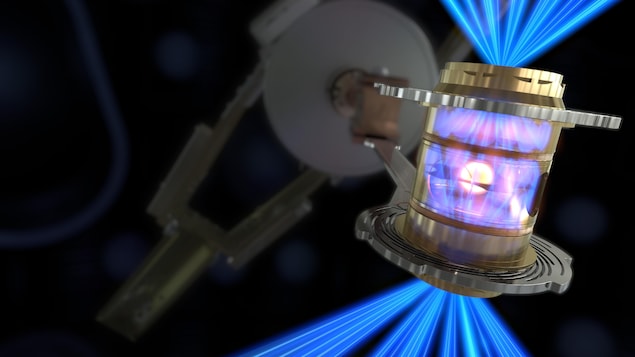
US Energy Secretary Jennifer Granholm made the announcement with scientists on Tuesday LLNL. She called victoryhistorical
It brings the opportunity to create the world closer Carbon-free abundant fusion energy
.
It took generations of people to achieve this goal. It is a scientific milestone and an engineering marvel as well.
Added Aarti Prabhakar, an engineer in the Office of Science and Technology Policy at the White House.
Clean Energy Promise
Scientists have been trying for more than 50 years to create energy through nuclear fusion, aiming to make it a clean source of energy.
It could one day allow humanity to break its dependence on fossil fuels, which are responsible for global warming. Another advantage: it does not create radioactive waste, unlike nuclear fission.
Fusion is different from fission, a technique currently used in nuclear power plants, which breaks the bonds of heavy atomic nuclei to recover energy.
Net energy gain has long been an elusive goal because fusion occurs at high temperatures and pressures that are difficult to control.
This nuclear reaction powers the stars, including our Sun. Thanks to the extreme heat and pressure conditions there, hydrogen atoms fuse together to form helium, generating enormous amounts of energy in the process.
On Earth, this process can be accomplished using ultra-powerful lasers.
Laboratory experiment
at LLNLOn December 5, no less than 192 lasers pointed at a target as small as a fingernail, which housed a tiny pellet made of diamond and hydrogen (deuterium and tritium) isotopes.
The lasers produced a temperature of about 150 million degrees, ten times the temperature of the Sun, which caused hydrogen atoms to fuse together. The reaction takes only a fraction of a second.
The scientists generated about 3.15 megajoules of energy this way, of the 2.05 megajoules actually delivered by the lasers, according to the announcement.
However, activating the lasers requires 300 megajoules of energy drawn from the electrical grid – the entire operation still incurs losses. But according to scientists, it will be In the end It is possible to overcome this problem.
Our calculations indicate that it is possible to achieve an output of several hundreds of megajoules with a large-scale laser system.
Lawrence Livermore National Laboratory Director Kim Buddle explained. But we are still far from it.
Not for tomorrow
Industrial and commercial solutions that allow energy production from nuclear fusion to supply homes and businesses are not for tomorrow, as the technical challenges remain significant.
I don’t think we or our children or grandchildren are going to directly benefit from nuclear fusion.
Pierre-Olivier Pinault, Chair Holder of Energy Sector Management at HEC Montreal says
A view shared by nuclear reactor expert Guy Marleau.
” Maybe in 2080… 2090, but there will be other inventions and other ways to start the fusion reactions that appear by then. »
Other nuclear fusion projects are under development, notably the international ITER project, currently under construction in France.
Instead of lasers, a so-called magnetic confinement technique is used: hydrogen atoms are heated in a massive reactor, where they are confined using a magnetic field.






More Stories
Allegations of corruption Qatar warns of ‘negative impact’ of European measures
USA: Famous “Hollywood cat” euthanized in Los Angeles
The campaigner who called for the shooting of Ukrainian children has not been charged